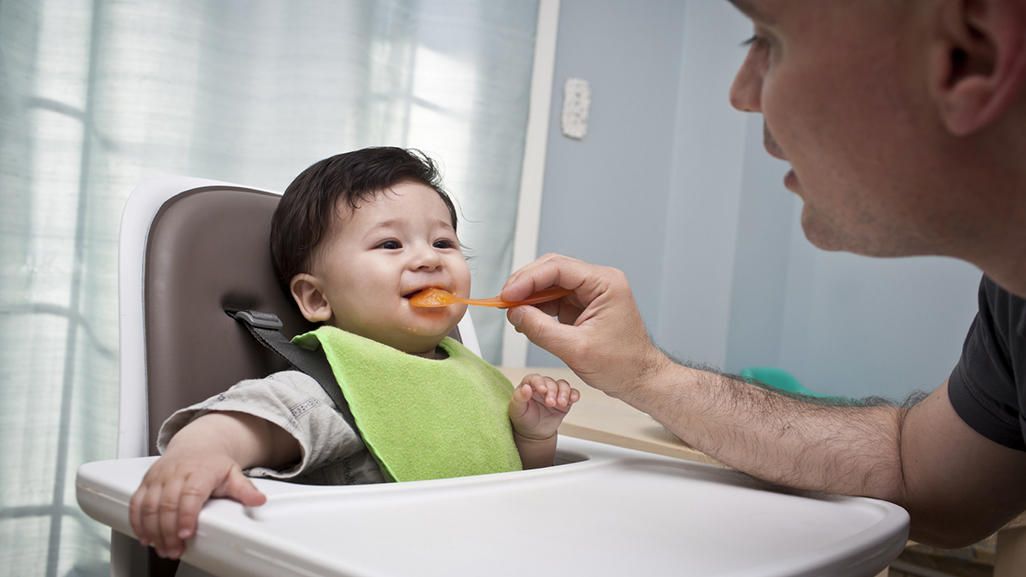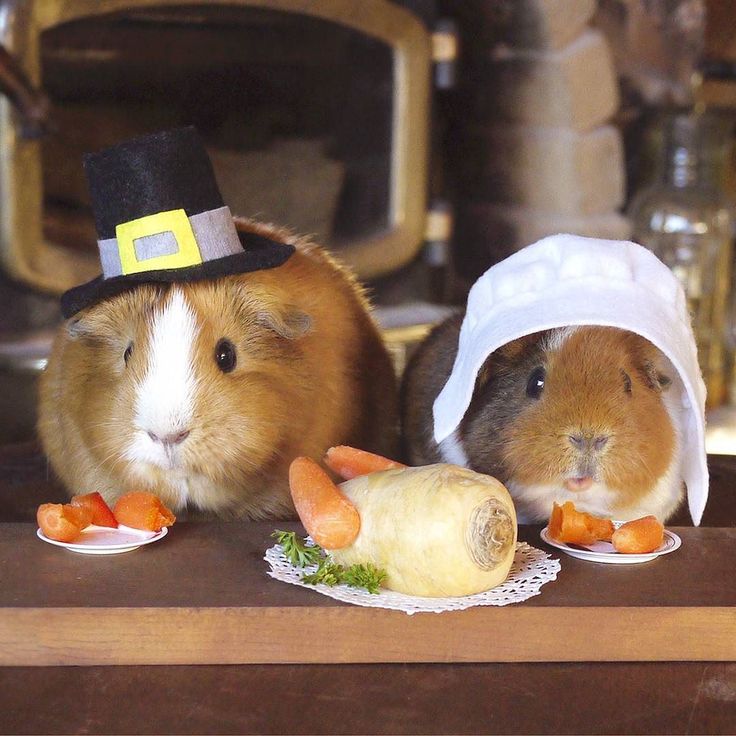Celebrity feeds baby like bird
'Clueless' Star Alicia Silverstone Fed Her Son Like Birds By Pre-chewing His Food
There’s no one right way to be a parent. Kids need love, and aside from that, there are many ways to successfully raise a child. Some parents prefer to helicopter, others follow the attachment parenting guide. And then there’s whatever Alicia Silverstone does.
The Clueless star has one child, a son named Bear Blu. Little Bear was born in 2011, and today is 8 years old. Bear and Silverstone are very close. Although she may not do it anymore, she had an unusual way of feeding Bear when he was a little cub.
Alicia Silverstone fed her son Bear like a bird
https://youtu.be/ZvySMbNA2zc
In 2012, Silverstone revealed she pre-chews Bear’s food like a bird. She posted a video of herself sitting on a couch with Bear, holding a bowl of soup. She then takes a bite of food and chews it, before spitting it back out into Bear’s mouth.
The process is apparently called ‘pre-mastication,’ according to an NBC News health expert. Silverstone posted the video on her own lifestyle blog, which is dedicated to health food.
On her blog, TheKindLife.com, Silverstone wrote that the ritual is very special. Both she and Bear enjoy it. She wrote: “I fed Bear the mochi and a tiny bit of veggies from the soup…from my mouth to his. It’s his favorite…and mine.”
The video sparked controversy and disgust in some, but there were others genuinely wondering if this is a good way to feed a child.
Feeding mouth-to-mouth is normal in some cultures
Alicia Silverstone | Dave Kotinsky/Getty ImagesRELATED: What is Alicia Silverstone’s Net Worth?
One blogger interviewed about the incident pointed out that this practice is likely age-old. Parents today were grossed out, but they may not be thinking about the course of human history.
Today, parents usually buy their baby food in the supermarket. It comes liquefied already. More intrepid moms and dads may cook their own vegetables and blend them at home. But both of those processes involve modern technology and industry that wasn’t always available and isn’t available in all parts of the world.
But both of those processes involve modern technology and industry that wasn’t always available and isn’t available in all parts of the world.
In remote areas, parents don’t have access to store bought baby food, or to industrial appliances for puréeing food. So sometimes chewing it manually first is the safest and most effective way to feed a baby.
It’s still common in many parts of the world, even in the United States. Moms in East and South Asia still premasticate for their babies today, although that may be in part out of necessity. In the US, 1 in 7 caregivers says they’ve done it before. So while Silverstone’s video may seem weird and stomach-churning, moms everywhere do the same thing.
Feeding babies like Alicia Silverstone may have some health benefits
View this post on Instagram
A post shared by Alicia Silverstone (@aliciasilverstone)
There are health negatives to premastication, according to the CDC.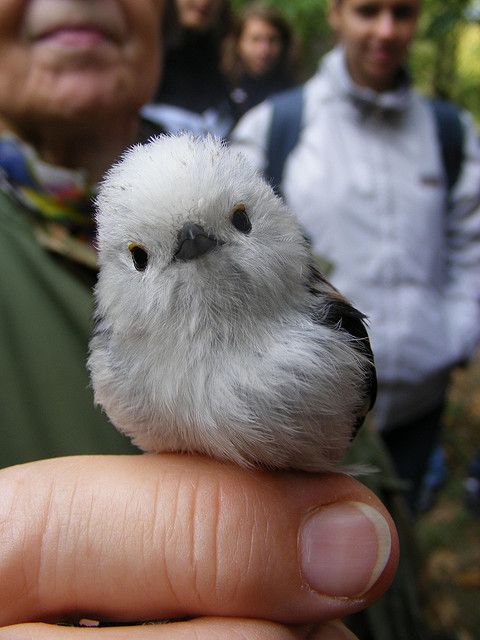 It may be a factor in the spread of HIV from a HIV+ mother to her HIV- child. It could also transfer bacteria that could lead to tooth decay, or other illnesses like strep throat. But there may be positives too.
It may be a factor in the spread of HIV from a HIV+ mother to her HIV- child. It could also transfer bacteria that could lead to tooth decay, or other illnesses like strep throat. But there may be positives too.
Just like bacteria in breast milk may boost a baby’s immune system, some scientists theorize that bacteria in premasticated food could do the same. Other scientists think that’s unlikely. Still, others think that it could depend entirely on the food being given to the child.
Premasticating processed food, for example, probably is not protective. Although Silverstone’s video seems gross, it is important to understand that people have been pre-chewing food for centuries.
The first recorded mention of it is in 1025 A.D. No matter how a parent chooses to feed a child, mom-shaming is never okay. In the 1940s and 1950s, breastfeeding was often shamed. Now it’s recognized as a fine way to feed a baby. Maybe Silverstone is just ahead of her time.
Alicia Silverstone's baby-feeding habits dangerous, experts say
By Rene Lynch
Alicia Silverstone’s new video has much of America saying Ewwwwwww!
The “Clueless” actress who is known for her healthy, vegan cooking and animal rights activism, posted a video on her website Tuesday that shows her feeding her child. The clip has gone viral.
Why? It’s all in her method as she seemingly takes her maternal nesting instinct to a new level.
The video shows her feeding her child Bear Blu like he’s...a baby bird. She chews of his food and then -- how else to say this? -- deposits the masticated morsels in his mouth.
Now, before you chalk this up to some crazy Hollywood mommy trend (like “Mad Men’s” January Jones telling People magazine she dines on her baby’s placenta for strength), know that Sliverstone’s practice is not all that unusual.
Many parents will admit to biting something -- say, a hot dog -- into smaller pieces when a fork and knife aren’t handy to make sure their child won’t choke. And way back when -- long before supermarkets and Gerber and Playtex -- people used premasticated food to transition children from mother’s milk to solids.
And way back when -- long before supermarkets and Gerber and Playtex -- people used premasticated food to transition children from mother’s milk to solids.
In fact, some experts decry the trend away from premasticated food.
In a 2009 research paper entitled “Premastication: the second arm of infant and young child feeding for health and survival?” and published in the journal of “Maternal & Child Nutrition,” experts said the practice helped boost a child’s immunity. “Its abandonment, particularly in poor communities, has placed children at increased risk of inadequate nutrition and decreased ability to confront infections,” researchers wrote.
But others are criticizing Silverstone, calling the practice dangerous. Swapping food from mouth to mouth puts kids at risk of catching a cold and can contribute to tooth decay, or worse.
“Word is Alicia Silverstone chews her food for her child. Don’t follow in her footsteps,” Delta Dental of Iowa tweeted this morning.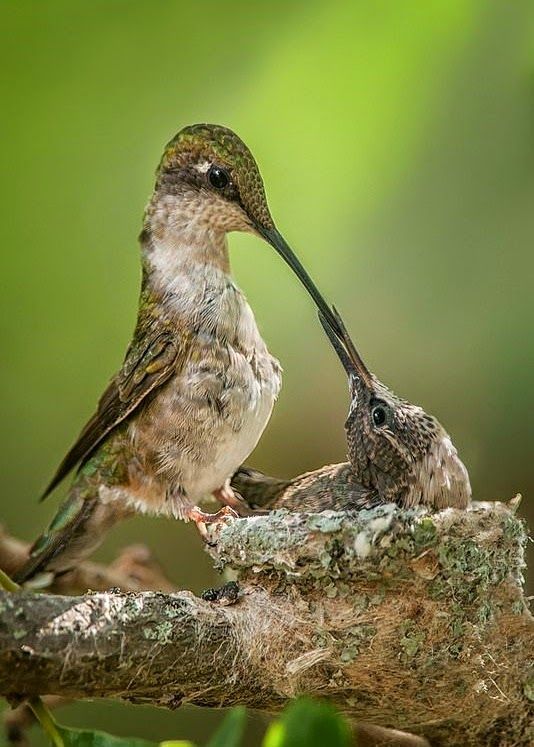 “You can pass dental disease!”
“You can pass dental disease!”
“Bacteria are passed when items contaminated with saliva go into a child’s mouth,” the insurance company warned in a recent press release. “Most parents don’t know they can pass harmful bacteria from their mouth to their baby’s mouth, which can put their child at an increased risk for cavities.”
Now, there are probably some of you out there wondering, “Why in the world would she post that video online?” Comedy writer Chase Mitchell thought the same, and tweeted thusly:
“We need a bold new strategy to get people talking about you again.” -- Alicia Silverstone’s publicist, yesterday morning
For her part, Silverstone says she loves feeding her 11-month-old this way, and you can see from the video above that he loves it too. “He literally crawls across the room to attack my mouth if I’m eating.”
Now that may be something that will make much of America say Awwwwww.
ALSO:
Mega Million jackpot hits record $476 million
N.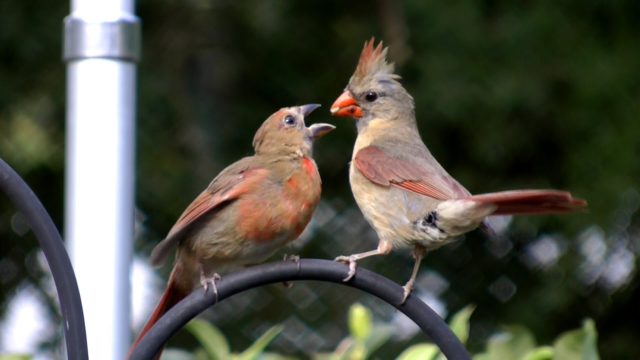 Y. chef says roaches are the food of the future
Y. chef says roaches are the food of the future
Trayvon Martin’s last words could be crucial to the case, attorney says
Join Rene Lynch on Google+, Facebook or Twitter
What kind of bird is better to have at home in an apartment
Pet, friend, family member - a bird? Actually a very good choice. Many birds (especially large ones) have a strong intellect, they will surprise you with their skills and habits for many years of living together. Each time you will discover something new.
Keeping poultry, much easier than other domestic animals:
- no need to walk, although it is possible! (they walk with birds on special leashes, didn’t you know?)
- in the case of short-term business trips or mini-vacations up to 5 days long, you can leave the birds alone, providing them with enough food, drink, and come up with some activities.
- in the case of long business trips, the bird can easily be given to friends, relatives for overexposure, it will not cause any particular inconvenience.
 Another option: ask them to come into the apartment, check on the pet every 3 days .... it's also not very stressful.
Another option: ask them to come into the apartment, check on the pet every 3 days .... it's also not very stressful. - birds do not have a characteristic smell, it will not appear even if you do not clean the cage regularly, even if you decide on a couple of birds.
- subject to simple rules for keeping birds, they will hardly get sick and live relatively long. Life expectancy depends on the species, well, as in humans, on the conditions of detention and nutrition.
The disadvantages of keeping poultry, perhaps, include:
- fluff, feather, lush feed rations. Especially if you do not keep the bird in custody for days on end. For one or two individuals, the amount of garbage will not be so large, but for some neat people this is annoying.
- some, such as your children, may be allergic to down and feathers, and they don’t know about it until the last. Not often, but it happens that birds are returned to breeders for this reason.

- some birds (especially cockatoos and especially when keeping errors) may have an excess of noise. For small and medium-sized ones (such as wavy and cockatiel), it is better to think about thick curtains in advance if you are a fan of sleeping on a day off, in which case everything should be fine.
- birds communicate with the world through their beaks, nature has given them nothing more. Some elements of decor or renovation of your apartment will be eaten. This can be successfully resisted, but more often it comes with experience, through losses and alterations.
- large birds have no less intelligence than a dog. But intelligence is also a character, if you spoil it with mistakes in maintenance, upbringing and taming, everything can go not at all as wonderful as you planned.
Think about what you expect from such a pet. Do you want to have a baby songstress? Or maybe you want a bird that can be taught to speak, or a bright overseas pet that will delight your eye with beautiful plumage? You should immediately decide what conditions you can provide a new pet, and whether you are ready to pay enough attention to it. All this will help you make the right choice.
All this will help you make the right choice.
- for a pleasant pastime, to entertain each other;
- melodic singing or imitation of speech and sounds;
- I just want to have some kind of animal at home;
- they can no longer see how the bird suffers in the store - I want to save it;
- investment, the purchase of some exotic bird is a good way to invest money, alas, this is also practiced;
- children should live together with nature and learn to take care of someone;
- all my life I dreamed of a big smart parrot!
- Contrary to popular belief, a bird, like a cat and a dog or a cat, will also require you to care and attention, and in some cases a fairly deep knowledge of the theory of content. Before you finally decide on a particular bird, it is important to find out everything about the breed and the characteristics of its captivity, find out what to feed your pet, what kind of cage or aviary he needs, what health problems your pet may face in the future.
 Let's take a closer look at the features of different types of birds!
Let's take a closer look at the features of different types of birds!
We advise you to watch this video, where the nuances of keeping large, medium and small parrots are revealed quite deeply:
Keeping wild birds in the apartment
Personally, I don’t really understand those who want to keep a bird in an apartment, which by nature can live outside your window, and I understand much more those who build feeders, buy bags of seeds for the winter, and then arrange a “photo hunt”, nevertheless, many wild birds easily get used to hands and captivity and it is practiced.
Probably, with the right maintenance, a bird in captivity will live longer than in nature, but it will also lose a lot. However, if you decide...
Goldfinch . A cute bird that is especially popular in home and apartment maintenance. The carduelis has a bright attractive color, it sings pleasantly and quickly gets used to the owner. These birds are unpretentious - a small cage is enough for them, which must be placed in a lighted place without drafts or direct sunlight. To quickly tame the goldfinch, the cage must be placed where you will constantly be in full view of your pet. Over time, the pichuga will look at you with curiosity. Goldfinches can be fed with a grain mixture with a high content of oilseeds. They love carduelis and greens, as well as fresh spruce branches.
The carduelis has a bright attractive color, it sings pleasantly and quickly gets used to the owner. These birds are unpretentious - a small cage is enough for them, which must be placed in a lighted place without drafts or direct sunlight. To quickly tame the goldfinch, the cage must be placed where you will constantly be in full view of your pet. Over time, the pichuga will look at you with curiosity. Goldfinches can be fed with a grain mixture with a high content of oilseeds. They love carduelis and greens, as well as fresh spruce branches.
Chizh. Small and unpretentious in appearance, he is a very perky singer, quickly gets used to his owner and eventually becomes quite tame. Siskins are unpretentious in feeding: flax, millet, rape seeds, a mixture for nightingales - all this will suit his taste and you can buy it at pet stores. He loves green plants, do not forget to germinate the seeds in the bird garden. To keep this bird, a small cage with transverse sticks is enough, in which the siskin will spin and sing songs all day long.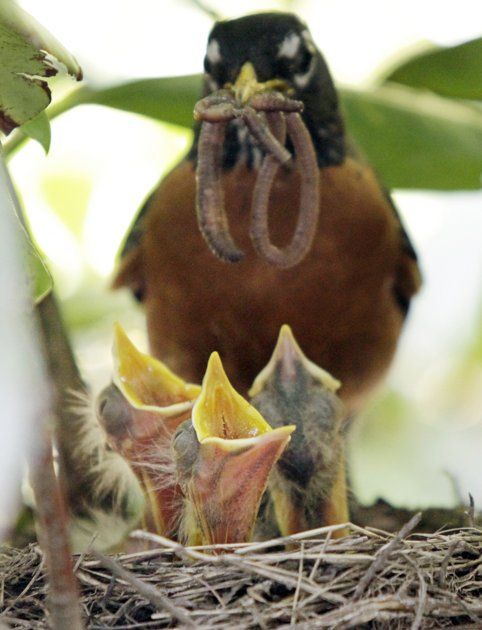
Oatmeal. This bird does not require any special skills in keeping, so it is quite suitable for a beginner bird lover. Male buntings are dressed very smartly - they have brown feathers combined with a bright yellow head and neck. These birds love to sing - their song is not difficult, but melodic, like the trill of a spring stream. However, oatmeal require a large space for living and are very distrustful of people, in this sense, keeping and getting used to a person can be a difficult, if not overwhelming task. There are very shy specimens - you can enjoy their singing only when the bird does not see you. They are unpretentious in feeding, the basis of nutrition is a grain mixture with additives from greens, or animal feed in the form of larvae.
Bullfinch . This bright curious bird very quickly gets used to captivity and life in an apartment. She does not sing, but whistles quite melodiously. Bullfinches are very friendly with people and show a desire to communicate with their owner, especially if you bring him goodies. The basis of nutrition for adult bullfinches is grain mixtures - millet, oatmeal, spruce and pine seeds. To ensure a balanced diet, birds need to be given greens and rowan berries.
The basis of nutrition for adult bullfinches is grain mixtures - millet, oatmeal, spruce and pine seeds. To ensure a balanced diet, birds need to be given greens and rowan berries.
Nightingale. This summer singer is quite capable of living at home, but requires careful attention and good care. Such a pichuga needs a large cage or aviary for a comfortable stay, which must be hung with a cloth at night. When the bird gets comfortable at home, it becomes quite tame and begins to please the ear with its famous singing. You need to feed the nightingale with live insects, which can be purchased at the pet store, and for a balanced diet it is better to add finely chopped cabbage or lettuce leaves with germinated wheat grains to the diet.
Lark. This field singer is very shy, therefore, to keep it in captivity, it is recommended to equip the cage or aviary with a soft fabric top: while the lark gets used to a new place, it can beat against the bars when people appear. Getting used to it will also be a difficult task. This little singer does not need a high cage with perches, but he loves to run, so the length of the cage or aviary should be sufficient. At the bottom you need to place a piece of turf, you can also sprout food in it. These birds willingly eat flour food, grated carrots and ant eggs.
Getting used to it will also be a difficult task. This little singer does not need a high cage with perches, but he loves to run, so the length of the cage or aviary should be sufficient. At the bottom you need to place a piece of turf, you can also sprout food in it. These birds willingly eat flour food, grated carrots and ant eggs.
Starling. This colorful bird is extremely curious and active. It is a pleasure to watch her: the starling is constantly running around and trying to carefully examine everything and feel it with her beak. Perhaps you did not know, but these pichugs are well trained in human speech and may well learn a few words. The starling gets used to a person, but only to one thing - he will be afraid of other people (for example, your guests). The cage or aviary for keeping the bird should be large - the starling likes to run and dig in the ground, so the bottom is covered with sand, earth, clay by 2-3 centimeters. In addition, starlings eat a lot - the basis of their diet is food of animal origin, in particular insects and larvae, which you will have to buy in pet stores, but birds will not refuse a variety of berries and fruits.
Owl . Owl in the apartment - isn't that cool? And so many people think, not knowing all the complexities of keeping an owl at home: starting from the fact that you cannot buy an owl without documents, it is completely illegal - the bird was caught from nature. Also, an owl must have a non-removable ring if it is grown in a nursery (for parrots, for example, the ring is a kind of optional bonus). Also keep in mind that keeping an owl is expensive. You will have to spend money not only on acquiring a bird, but also on buying the necessary ammunition, building an aviary or refurbishing a room. Owl food is expensive. Just go to the nearest pet store, see how much it costs to buy one mouse, and estimate that your owl will need at least one mouse per day. While the owlet is growing - from 2-4 mice per day. If you have a large owl, then the daily number of mice increases. We highly recommend reading this article by a professional ornithologist before you decide to buy an owl. And here they paint the everyday life of a more or less normal content of an owl. See if you are ready to go for it.
And here they paint the everyday life of a more or less normal content of an owl. See if you are ready to go for it.
Crow . Think twice before you bring a crow or any other bird from the corvid family in your apartment: unlike herbivores, their droppings have an unpleasant odor, they do not tolerate imprisonment in cages very well and are likely to break all their feathers. Here an experienced comrade tells everything about this in great detail:
Domesticated birds
All these birds are bred in captivity, so neither they nor nature will lose anything if you get yourself such a pet. The maximum that is possible is to make ideal conditions for keeping your bird, and if you decide later, then buy a pair for it.
Canary. These nimble birds get used to humans very quickly and become tame.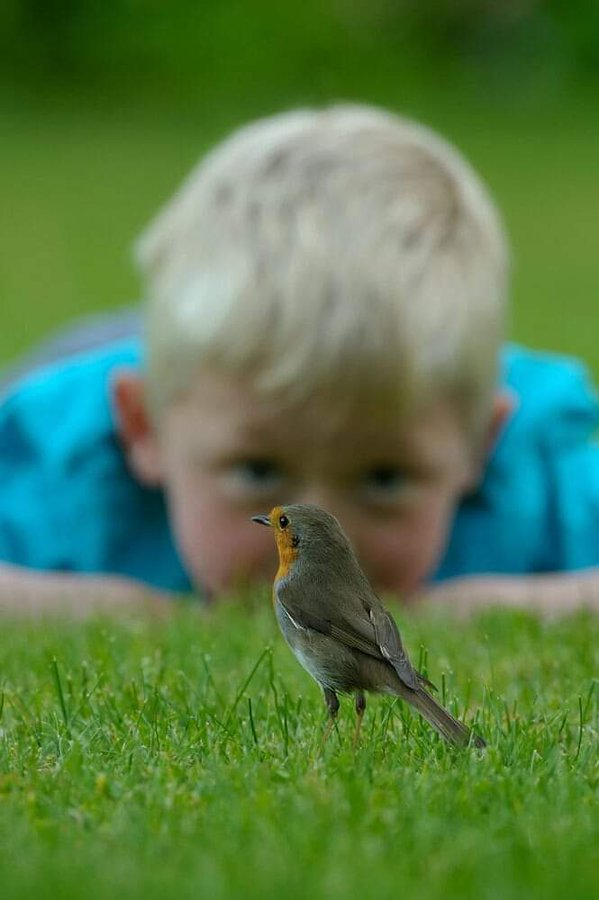 If you want to hear singing, then when buying, choose a male, since female canaries do not sing, moreover, breeders must properly raise male canaries, otherwise there may also be problems with singing. These birds can be recommended to novice bird lovers - they are very unpretentious in content. The cage for the canary should be rectangular, with a sufficient number of perches. The basis of the diet is the usual grain food for birds, to which you can add a chopped boiled egg, cottage cheese, grated apple and a little crushed chalk as a healthy supplement.
If you want to hear singing, then when buying, choose a male, since female canaries do not sing, moreover, breeders must properly raise male canaries, otherwise there may also be problems with singing. These birds can be recommended to novice bird lovers - they are very unpretentious in content. The cage for the canary should be rectangular, with a sufficient number of perches. The basis of the diet is the usual grain food for birds, to which you can add a chopped boiled egg, cottage cheese, grated apple and a little crushed chalk as a healthy supplement.
Amadin. Bright funny bird that quickly gets used to the new owner. They are not expensive, they are easy to find in pet stores. If you calmly approach a cage with a bird and talk quietly to it, then in just a couple of weeks it begins to look and listen curiously, and over time it becomes a completely tame pet. This bird is thermophilic, therefore, when placing the cage, places with drafts should be avoided (although this is true for all feathered pets, they have increased gas exchange, and if it is blown out of the cage, they have nowhere to go). The diet of the finch includes a grain mixture - mainly millet, to which cereals, fruits, vegetables and boiled eggs are added. The feed mixture can also be sprouted in the form of a bird garden at the bottom of the cage or where the finches can feast on what has grown.
Parrots for keeping in an apartment are the best choice.
With a high probability, they will also be bred in captivity, but there may be options, especially in the case of some kind of exotic. Probably you should not encourage poachers who capture birds from the wild - such options can be on Internet bulletin boards, and for you this is fraught with natural sores and parasites that wild birds live with. It is better to buy birds in pet stores or from breeders, in this case, again, you do not harm nature, and the health of the bird should not bring you unpleasant surprises. Parrots are perhaps the most common bird species for home and apartment keeping.
Budgerigar. This cheerful bright bird is most often started in apartment conditions.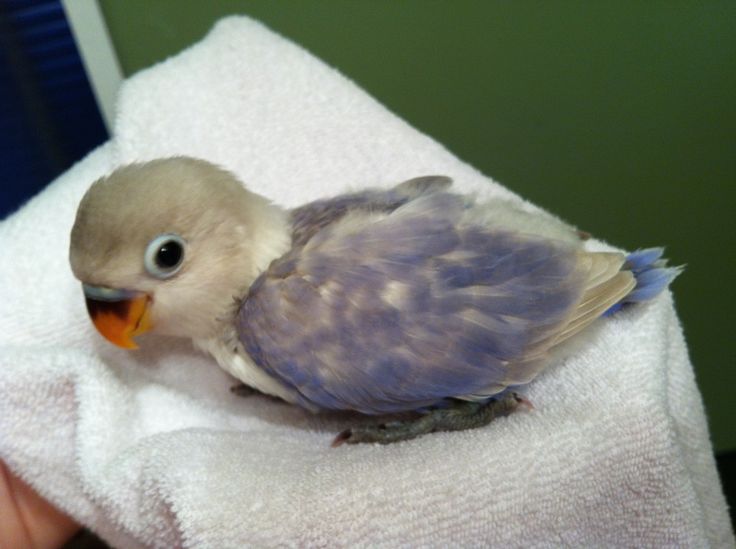 Here, the simplicity of maintenance, low price, the ability to visually determine the male and female. They are distinguished by friendly behavior, quickly become attached to a person and do not require a special approach in content. Most often, budgerigars have bright green or yellow plumage, but individuals with blue or white-blue feathers are also found. They are very curious, sociable, males quickly learn to speak or duplicate other sounds. The cage or aviary with this bird should be placed in a lighted place without drafts, and fed with the usual mixture from the pet store.
Here, the simplicity of maintenance, low price, the ability to visually determine the male and female. They are distinguished by friendly behavior, quickly become attached to a person and do not require a special approach in content. Most often, budgerigars have bright green or yellow plumage, but individuals with blue or white-blue feathers are also found. They are very curious, sociable, males quickly learn to speak or duplicate other sounds. The cage or aviary with this bird should be placed in a lighted place without drafts, and fed with the usual mixture from the pet store.
Jaco. These birds are one of the most talkative parrots, so they are often kept indoors. They do not just repeat words, but also mimic human speech quite similarly! Jacos love communication, so you need to pay enough attention to them, otherwise the bird may get bored and get sick. The cage for keeping should be spacious, with a lot of toys, mirrors and crossbars, because this is an active and mobile parrot.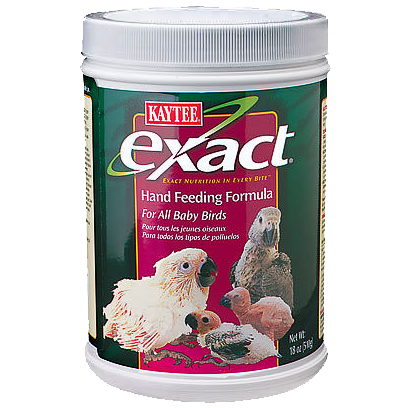 He loves nuts, fruits, vegetables, as well as mixtures of seeds. These parrots can learn various tricks and tricks: do you think it's fun when a dog runs after a stick? You have not yet seen what these wise birds are capable of, if you get Jaco, be sure to study the English Internet for learning tricks and tricks, training - in Russia for some reason this is not very widely practiced and a lot of your pet's capabilities remain unclaimed. Jacos have great intelligence, but do not forget that intelligence is also a character, and if there are errors in the content, it may not please you at all. The upbringing and maintenance of a Jaco will require you to have advanced skills and knowledge of theory. Everything is not simple here.
He loves nuts, fruits, vegetables, as well as mixtures of seeds. These parrots can learn various tricks and tricks: do you think it's fun when a dog runs after a stick? You have not yet seen what these wise birds are capable of, if you get Jaco, be sure to study the English Internet for learning tricks and tricks, training - in Russia for some reason this is not very widely practiced and a lot of your pet's capabilities remain unclaimed. Jacos have great intelligence, but do not forget that intelligence is also a character, and if there are errors in the content, it may not please you at all. The upbringing and maintenance of a Jaco will require you to have advanced skills and knowledge of theory. Everything is not simple here.
Cockatoo. These parrots can become companions for life, as they are long-lived - in captivity they can live up to half a century, and some individuals have stepped over the 80-year milestone. The most characteristic feature of this bird is a bright crest that rises when the cockatoo is alarmed or excited about something. This is a loud bird that loves to yell and talk. You need to educate this parrot from childhood, otherwise it can tire and annoy your family, and the bite of a hard cockatoo beak is very painful. In order for the beak to be in order, branches and twigs should be regularly placed in the cage with the bird, nuts and other solid food should be given. Many parrots of this species like to take a shower and enjoy basking under the spray of water from a spray bottle (although this is typical for many species). As in the case of Jaco - Cockatoos have a sickly intellect, but with the wrong content, this very intellect can turn your life into hell, the bird can grow aggressive and excessively noisy. Treat the keeping of such birds as a full-fledged course of some subject at the institute, where you must eventually pass the test, otherwise you will be expelled. In addition, remember that the larger the parrot, the larger its beak - the cockatoo is also called "flying wire cutters", think about whether your apartment is ready for this.
This is a loud bird that loves to yell and talk. You need to educate this parrot from childhood, otherwise it can tire and annoy your family, and the bite of a hard cockatoo beak is very painful. In order for the beak to be in order, branches and twigs should be regularly placed in the cage with the bird, nuts and other solid food should be given. Many parrots of this species like to take a shower and enjoy basking under the spray of water from a spray bottle (although this is typical for many species). As in the case of Jaco - Cockatoos have a sickly intellect, but with the wrong content, this very intellect can turn your life into hell, the bird can grow aggressive and excessively noisy. Treat the keeping of such birds as a full-fledged course of some subject at the institute, where you must eventually pass the test, otherwise you will be expelled. In addition, remember that the larger the parrot, the larger its beak - the cockatoo is also called "flying wire cutters", think about whether your apartment is ready for this. Jaco and Kakadu themselves are not cheap, but they will also require a spacious cage / aviary.
Jaco and Kakadu themselves are not cheap, but they will also require a spacious cage / aviary.
Lovebirds. Very beautiful parrots with a bright color, they are also called "birds of love". They will not speak intelligibly, but they are very funny and sociable, so it is better to keep lovebirds in pairs (although in fact this applies to absolutely all types of birds). Lovebirds are well-known fidgets, so it is better for them to be in a spacious cage equipped with perches, mirrors and a variety of toys. In food, they are unpretentious, so a simple grain mixture with the addition of fresh herbs and vegetables to the diet is suitable for them.
Corella. In Russia they are also called "nymphs". This is the middle class of birds, in size and intelligence are somewhere between budgerigars and jakko / cockatoo. Biologists and ornithologists have recently classified them as a species of cockatoo. We can say that this is the ideal middle ground for various parameters: size, intelligence, price, noise, I would highly recommend considering this option more carefully . Corella is a very beautiful and sociable parrot that remembers human speech well, can learn a few words or expressions, it perfectly imitates everyday sounds, can learn several melodies of an artistic whistle. He is friendly and sociable, likes to actively move in space, so the aviary or cage for the cockatiel should be quite spacious, equipped with enough stairs and perches. For these birds, variety in feeding is important - they constantly need a grain mixture, crushed nuts, dandelion leaves, vegetables and fruits. It is highly recommended to germinate food in a bird garden in a cage or outside it. Corells are trained, they can perform various tricks, although not as well as in the case of a jaco or cockatoo, nevertheless, they are much better than other parrots.
Corella is a very beautiful and sociable parrot that remembers human speech well, can learn a few words or expressions, it perfectly imitates everyday sounds, can learn several melodies of an artistic whistle. He is friendly and sociable, likes to actively move in space, so the aviary or cage for the cockatiel should be quite spacious, equipped with enough stairs and perches. For these birds, variety in feeding is important - they constantly need a grain mixture, crushed nuts, dandelion leaves, vegetables and fruits. It is highly recommended to germinate food in a bird garden in a cage or outside it. Corells are trained, they can perform various tricks, although not as well as in the case of a jaco or cockatoo, nevertheless, they are much better than other parrots.
More about Corell
What kind of bird is better to have in an apartment?
Parrots are definitely the friendliest and most sociable of poultry, they are a classic.
Keeping birds in an apartment has many advantages, because they can become cheerful and cheerful pets that brighten up your leisure time.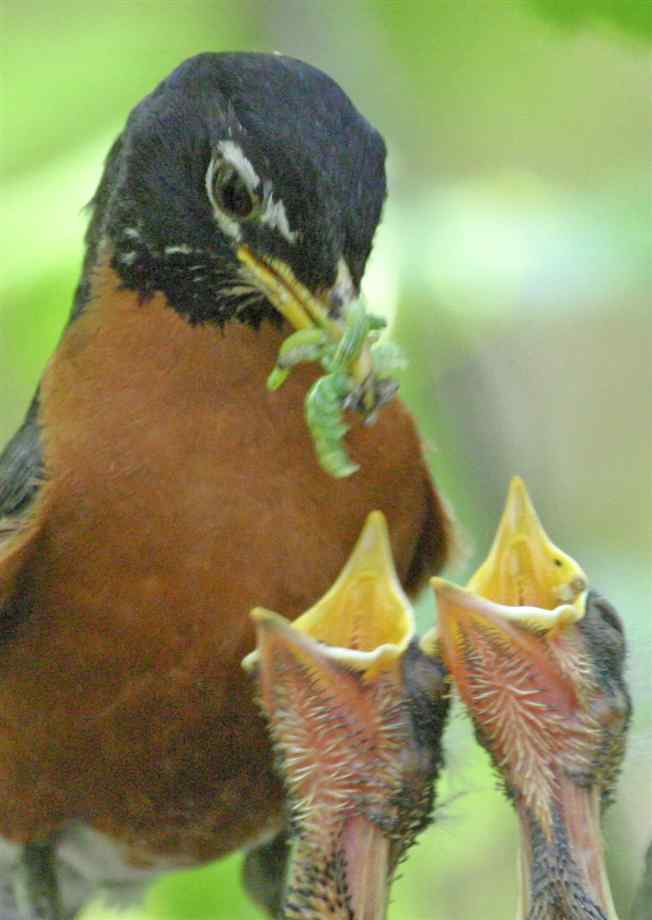 Birds are easy to care for, fun to watch, easy to leave to look after when you leave, and don't need to be walked several times a day. If you are starting a bird for the first time, you should not take domesticated wild birds - certain skills are needed to care for them.
Birds are easy to care for, fun to watch, easy to leave to look after when you leave, and don't need to be walked several times a day. If you are starting a bird for the first time, you should not take domesticated wild birds - certain skills are needed to care for them.
When purchasing wild birds, remember that you need to get used to them. It is advisable to buy an already tamed, calm bird that will not beat on the cage - this way you will avoid stress and injury. In any case, a bird is a pet that expects love, affection and care from its owners. And, in turn, poultry is able to deliver many pleasant minutes to its owner, responding with love to his care.
It is highly not recommended to start acquaintance with large breeds of parrots - these birds have a complex character and require certain training, knowledge of the theory of maintenance. If you have little free time to communicate with a bird, do not buy big birds, stop at a budgerigar or cockatiel, of course, they will also experience loneliness and lack of attention, but at least they will not turn your life into hell.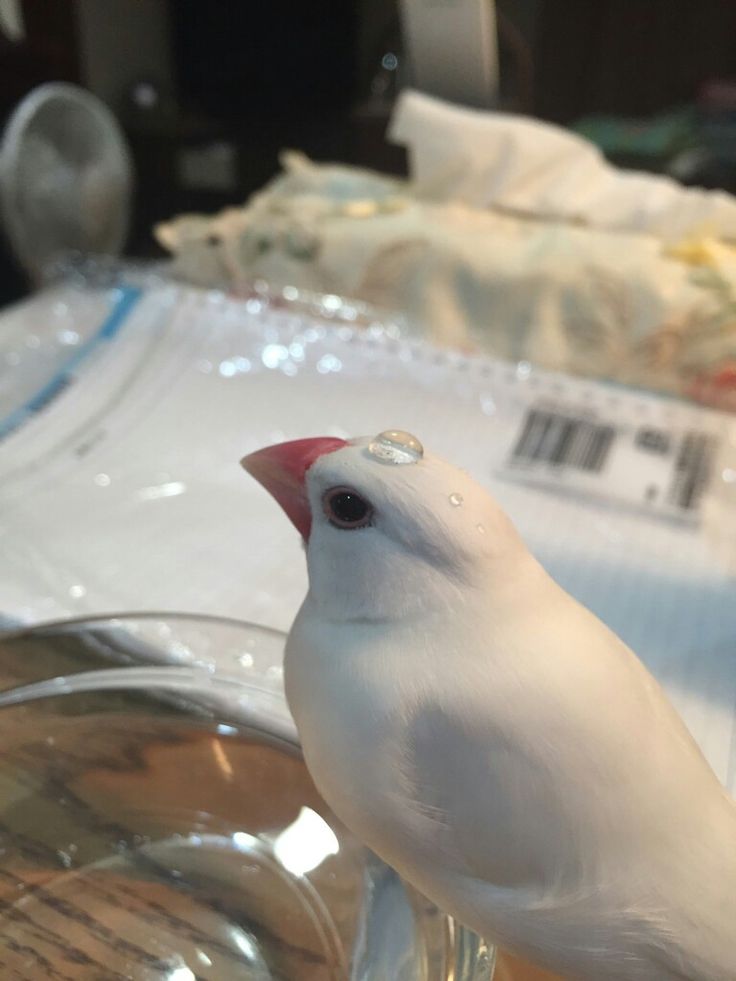 Canaries are very easy to care for - they can be alone for a long time without health consequences. Many owners, after keeping a bird for a year or two, decide to buy a pair for them - this, of course, will diversify the life of your current pet + opens breeding opportunities for you and your birds. And this is a separate, very large and very interesting story. If we imagine that keeping a bird itself is two volumes of a book, then keeping a pair and breeding is six more - that is how many new and interesting birds can bring into your life.
Canaries are very easy to care for - they can be alone for a long time without health consequences. Many owners, after keeping a bird for a year or two, decide to buy a pair for them - this, of course, will diversify the life of your current pet + opens breeding opportunities for you and your birds. And this is a separate, very large and very interesting story. If we imagine that keeping a bird itself is two volumes of a book, then keeping a pair and breeding is six more - that is how many new and interesting birds can bring into your life.
"They didn't feed me well at home, so there are no heads." SKA player gave an interview to his wife during the break of the match
The match between SKA and Sibir will be remembered not only by the 11th defeat in a row, Barabanov's three assists and Hellberg's cracker, but also by an unexpected interview during the second break.
Evgenia Tikhonova turned out to be in the frame, taking comments from her husband, Viktor Tikhonov.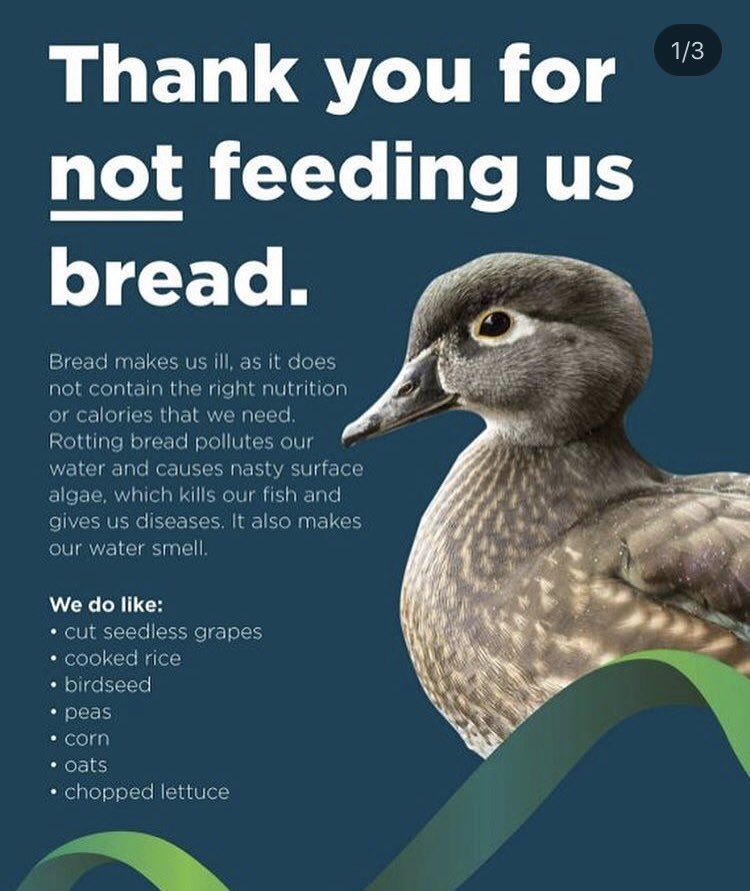 The girl was so worried that she called her husband a defender, although he is a striker.
The girl was so worried that she called her husband a defender, although he is a striker.
But the rest of the interview turned out to be funny and family friendly.
– How is the game going? Why didn't you score a goal? I used to watch a completely different game.
– You see, I was poorly fed at home today, they usually feed better, so there are no goals yet. Well, we play well, we lead by score. We can still pick up the pace a bit and improve our game.
- Good. Let's talk about other hockey. Tomorrow we have a completely different game planned - we have Lev 9 training0006 (son of Evgenia and Victor - Sports.ru note) . And do you know that you bring it yourself there?
– Where to?
- For training.
– Will I be a coach?
– No, you will work as a driver tomorrow.
- Oh, I'll be the driver tomorrow. I can do it too: I have a license, I drive well.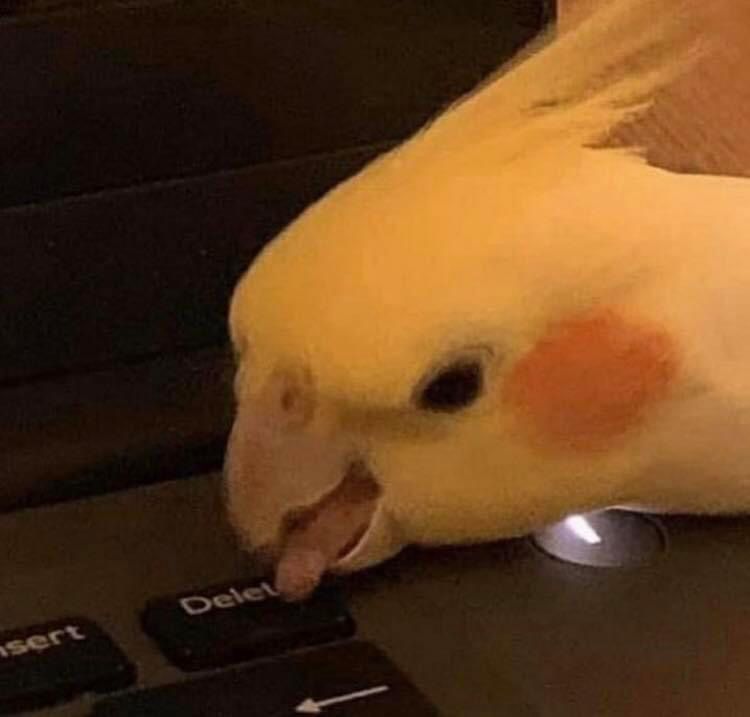 And I always enjoy watching my family play hockey.
And I always enjoy watching my family play hockey.
- If there is no puck at home, then I expect white roses, just in case.
- Good. So far, my game with flowers is not going very well. I, in my opinion, have not yet given in the last month, and therefore I will give not one bouquet, but two.
– Thank you very much, good luck in the third period.
Viktor Tikhonov spent more than 12 minutes on the ice in the match with Sibir, made one shot on target, but did not score and did not score with a pass. It looks like it will really correct the statistics with bouquets.
After the match, Evgenia deftly got out of the situation with her husband's role on her Instagram by posting a photo with the caption "When you call a spade a spade and interview your ... defender."
View this post on Instagram
Yevgenia Tikhonova herself has been playing hockey since 2005 – a few years ago she was the captain of the team of SKA players' wives.







